

Our connections to the planet
We see these links as not only deep, but fundamental. Land and soil are the primary assets of VIVESCIA cooperative farmers. Our businesses have their roots in working the land. In today’s world, the land is the focus for some of the most fundamental environmental challenges we face, from climate change resilience to the protection of biodiversity, the agroecological and low-carbon transitions, packaging and reducing our impact on natural resources. All these issues and more are addressed in the ‘My Coop 2025’ business plan implemented by our Cooperative, and the strategic plans of all VIVESCIA Industries companies.
From field to fork, we have a key role to play, and intend to play it to the full, because we understand that the land is a living entity; an ecosystem whose good health determines the future of our business, and more importantly, the future of humanity and our planet.

Our commitments
CLIMATE
(scope 1 and 2) by 2030, to contribute to carbon neutrality by 2050. Reference year 2020-2021.
AGROECOLOGICAL TRANSITIONS, BIODIVERSITY & WATER
ENVIRONMENTAL MANAGEMENT
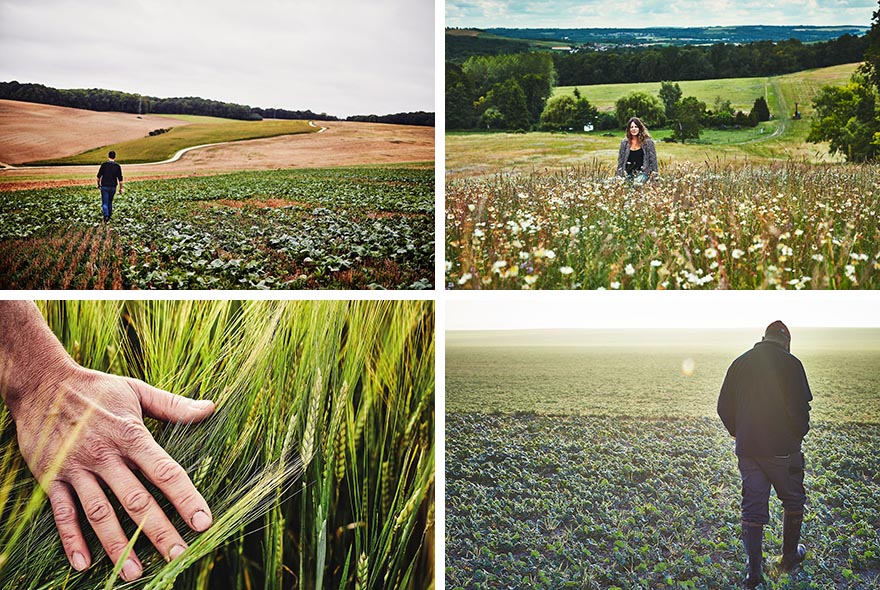

VIVESCIA in action
Proactive projects, initiatives and proven commitment
This major commitment is underpinned by the efforts made over many years by the cooperative farmers of VIVESCIA, with the help and support of our Cooperative. In response to today’s major environmental challenges, our agronomists are committed to offering
the right agronomic solutions for a broad range of production methods, and the individual needs and business plans of each farmer.
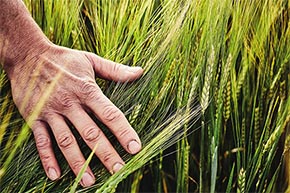
This major commitment is underpinned by the efforts made over many years by the cooperative farmers of VIVESCIA, with the help and support of our Cooperative. In response to today’s major environmental challenges, our agronomists are committed to offering
the right agronomic solutions for a broad range of production methods, and the individual needs and business plans of each farmer.
Our target is clear: we intend to reduce our biodiversity footprint in all our operating regions. But before we can implement precisely tailored action plans, we must first conduct an assessment of that footprint, and measure and quantify the dependencies and pressures imposed on biodiversity.
➜ Work on conducting the biodiversity footprint assessment of the Group and its activities (including bought-in raw materials) will begin in 2023
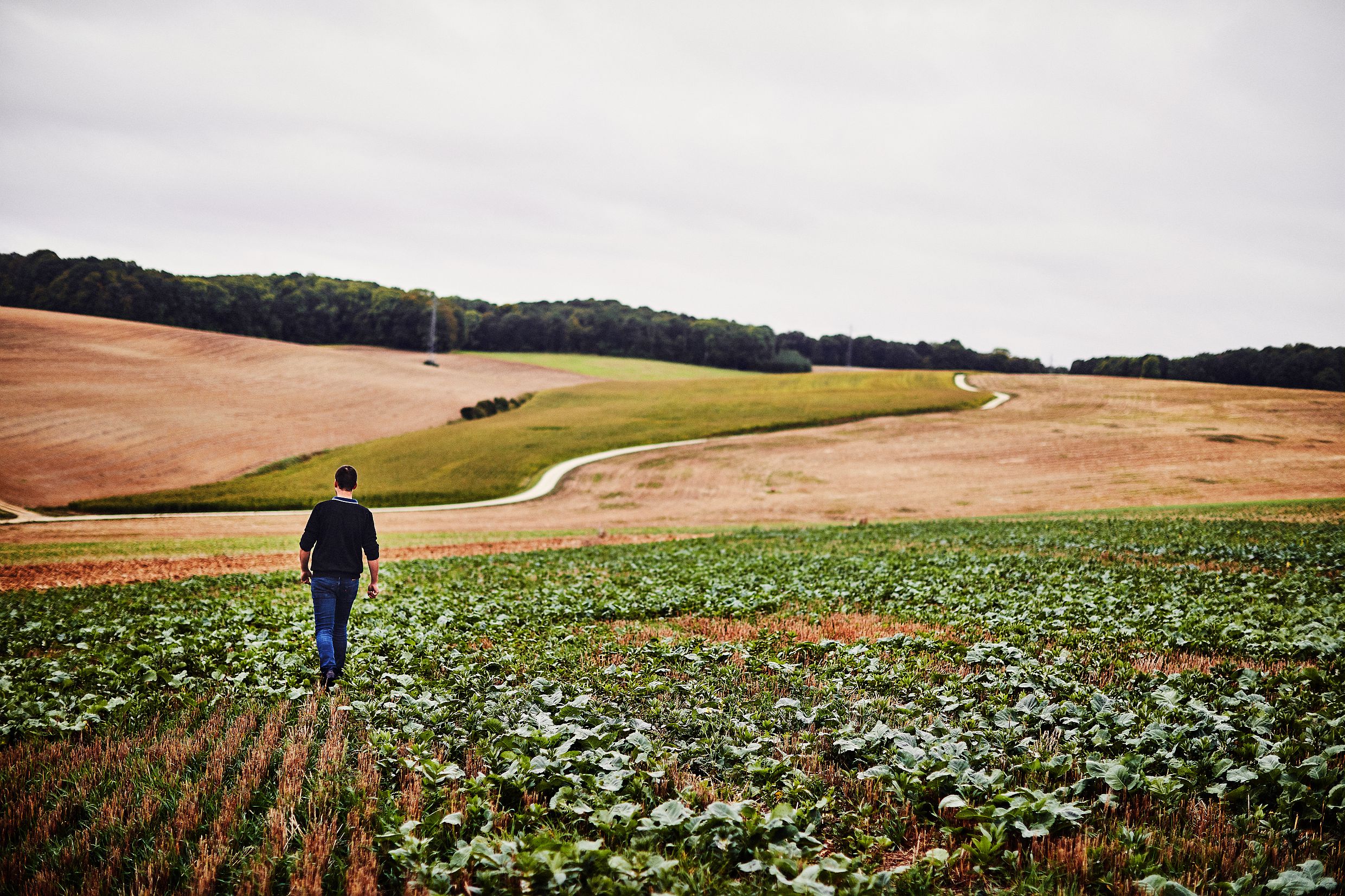
Our target is clear: we intend to reduce our biodiversity footprint in all our operating regions. But before we can implement precisely tailored action plans, we must first conduct an assessment of that footprint, and measure and quantify the dependencies and pressures imposed on biodiversity.
➜ Work on conducting the biodiversity footprint assessment of the Group and its activities (including bought-in raw materials) will begin in 2023
Our Group Environmental Charter is an integral part of building ambitious and substantial foundations for our direct environmental responsibilities, and encouraging the development of a genuinely cross-functional culture. Rolled out during 2022, it clearly sets out the fundamental principles of environmental management that all Group sites must comply with by 2024.
It covers the following issues:
- energy
- greenhouse gas emissions
- water
- biodiversity
- by-products and waste
- pollution and pollutants
A working group of business experts has specified the content and supervision required to ensure compliance within the time scale set. In total, around forty people, including industrial, technical, CSR and environmental directors and managers, were involved in creating this fundamental building block.
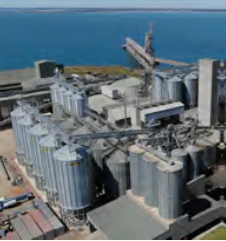
Our Group Environmental Charter is an integral part of building ambitious and substantial foundations for our direct environmental responsibilities, and encouraging the development of a genuinely cross-functional culture. Rolled out during 2022, it clearly sets out the fundamental principles of environmental management that all Group sites must comply with by 2024.
It covers the following issues:
- energy
- greenhouse gas emissions
- water
- biodiversity
- by-products and waste
- pollution and pollutants
A working group of business experts has specified the content and supervision required to ensure compliance within the time scale set. In total, around forty people, including industrial, technical, CSR and environmental directors and managers, were involved in creating this fundamental building block.
Conducting a soil carbon storage and greenhouse gas emissions assessment for the farms run by VIVESCIA cooperative farmers will provide the essential base level from which to take stock of the current situation and take the most effective action possible.
In April 2022, VIVESCIA began offering all cooperative farmers a free simplified carbon analysis that uses an appropriate, straightforward and accessible methodology developed by the Cooperative's agronomic teams in partnership with a regional startup.
VIVESCIA is the first cereal farming cooperative to offer such a large-scale programme of simplified carbon analyses. Its assessment of greenhouse gas emissions from its farms will be complete by summer 2022, and will significantly accelerate the introduction of low-carbon progress initiatives
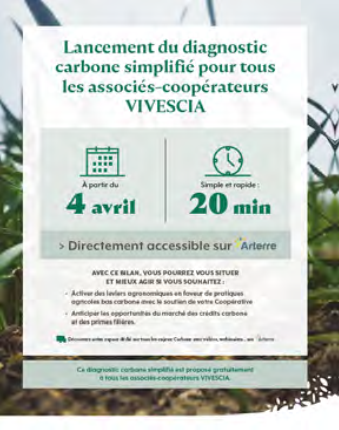
Conducting a soil carbon storage and greenhouse gas emissions assessment for the farms run by VIVESCIA cooperative farmers will provide the essential base level from which to take stock of the current situation and take the most effective action possible.
In April 2022, VIVESCIA began offering all cooperative farmers a free simplified carbon analysis that uses an appropriate, straightforward and accessible methodology developed by the Cooperative's agronomic teams in partnership with a regional startup.
VIVESCIA is the first cereal farming cooperative to offer such a large-scale programme of simplified carbon analyses. Its assessment of greenhouse gas emissions from its farms will be complete by summer 2022, and will significantly accelerate the introduction of low-carbon progress initiatives
This strategy will encompass the broadest possible scope of VIVESCIA activities, from upstream (the Cooperative and its
subsidiaries) to downstream (the companies of VIVESCIA Industries).
Launched in autumn 2021, this cross-functional campaign conducted in conjunction with specialist consultants will conduct a robust assessment of our Scope 3 emissions and set a forward trajectory for our direct and indirect scopes for the period to 2050, set intermediate targets to be achieved by 2030, and monitor relevant indicators.

This strategy will encompass the broadest possible scope of VIVESCIA activities, from upstream (the Cooperative and its
subsidiaries) to downstream (the companies of VIVESCIA Industries).
Launched in autumn 2021, this cross-functional campaign conducted in conjunction with specialist consultants will conduct a robust assessment of our Scope 3 emissions and set a forward trajectory for our direct and indirect scopes for the period to 2050, set intermediate targets to be achieved by 2030, and monitor relevant indicators.
The substantial efforts we have made since 2015 have already enabled us to reduce our greenhouse gas emissions by 14%.
We are working on two key levers to enable effective action within our direct area of responsibility: optimising energy consumption and working to develop a less carbon-intensive energy mix.
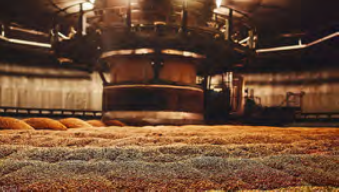
The substantial efforts we have made since 2015 have already enabled us to reduce our greenhouse gas emissions by 14%.
We are working on two key levers to enable effective action within our direct area of responsibility: optimising energy consumption and working to develop a less carbon-intensive energy mix.

